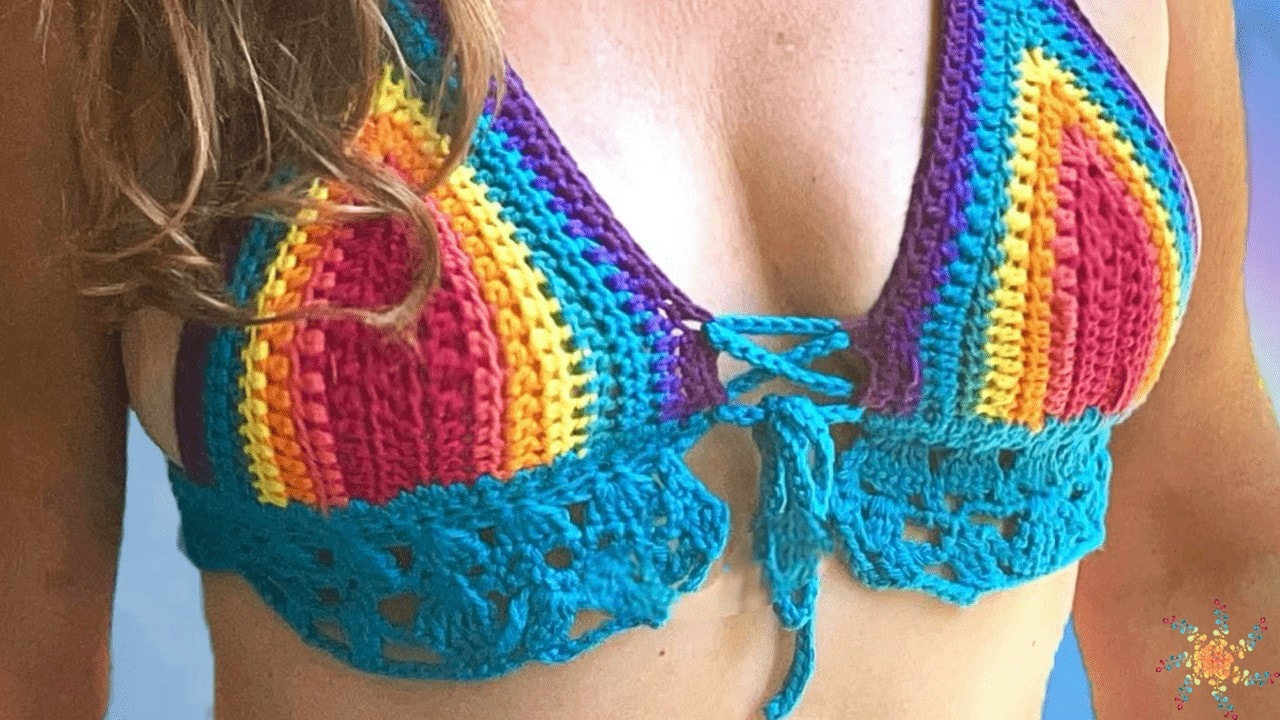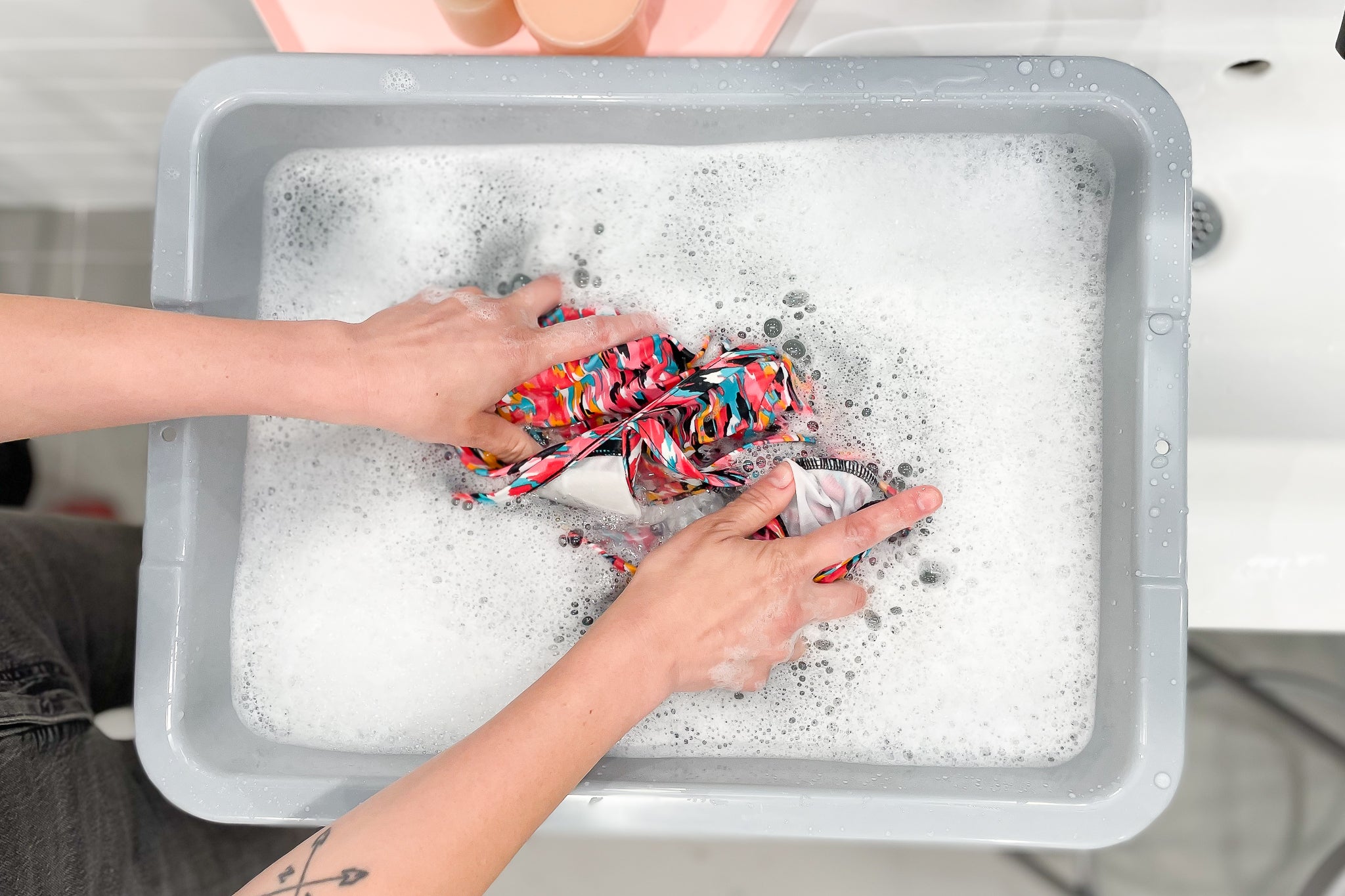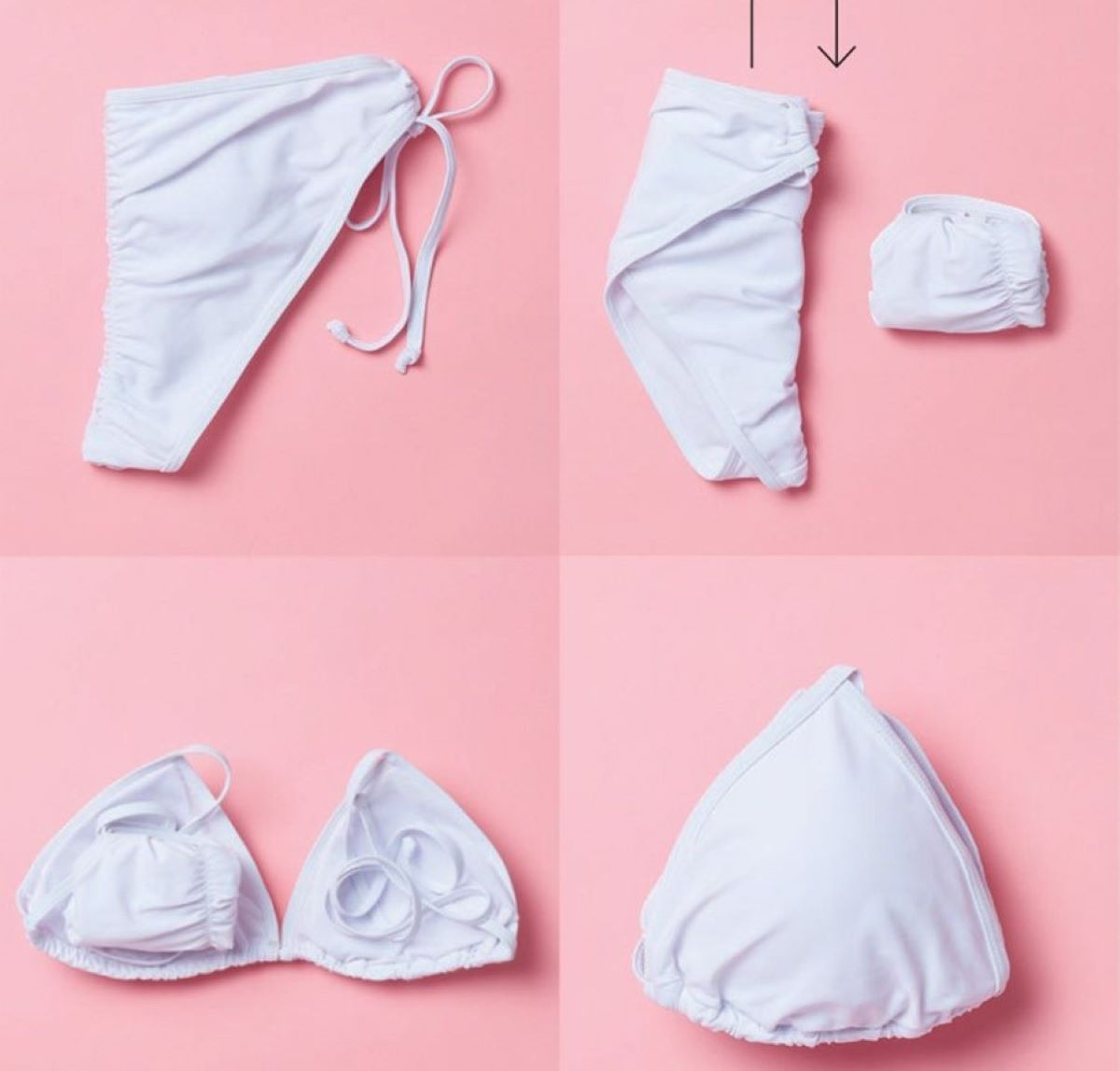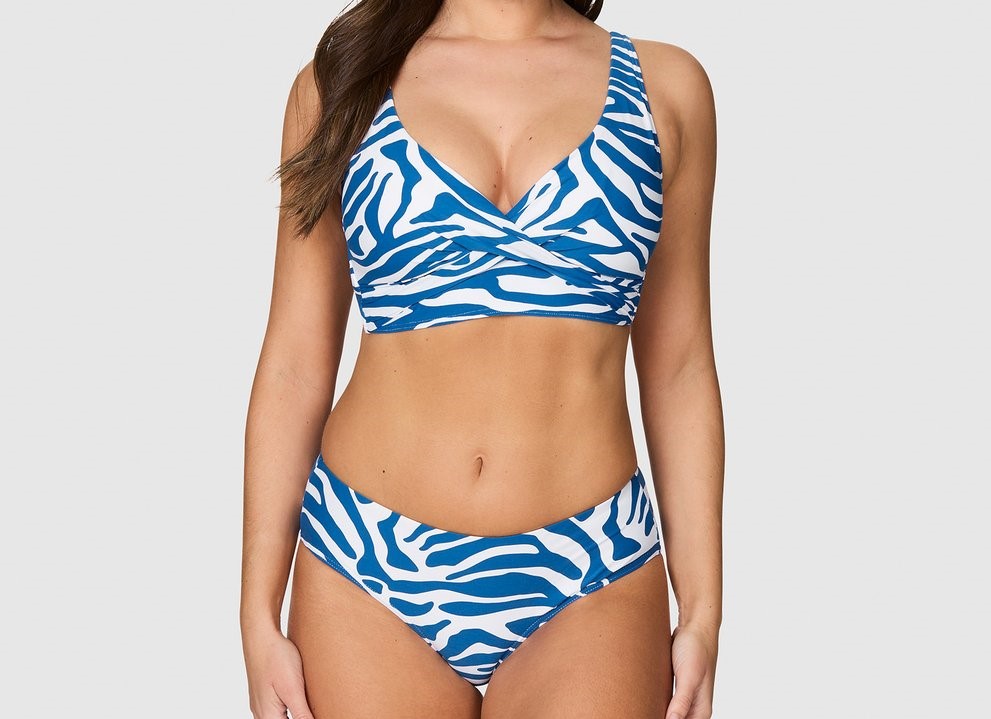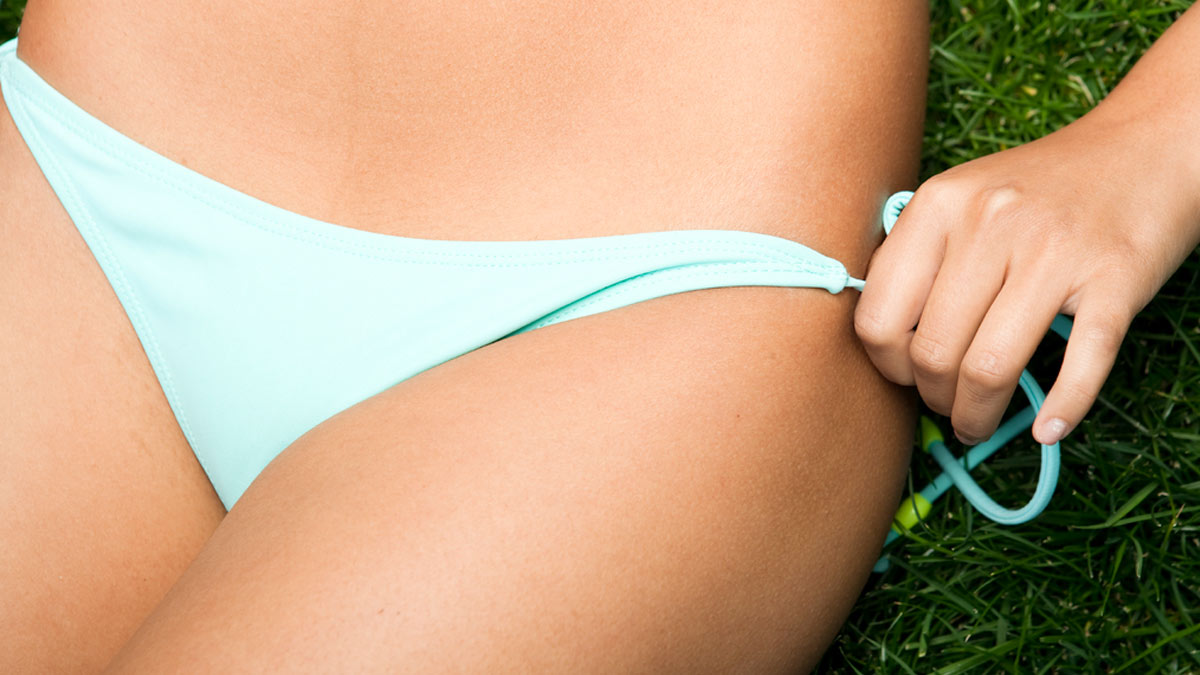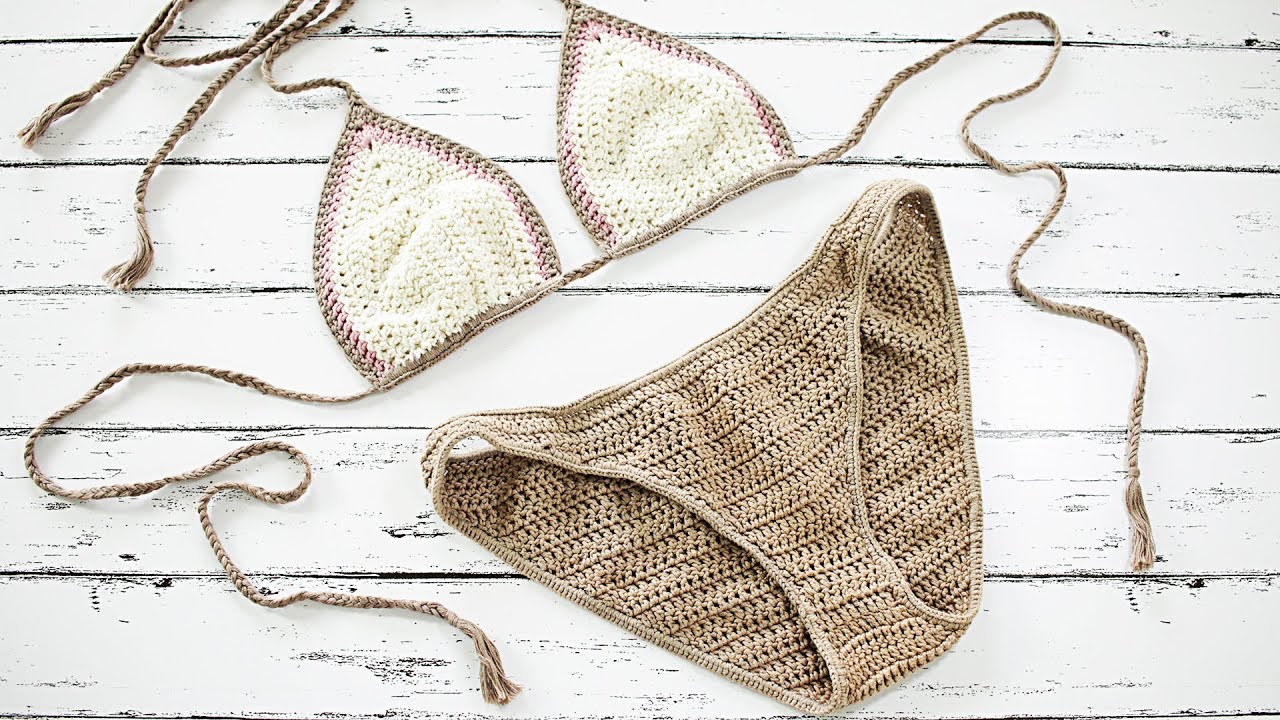Home>How-to Guides>For Women>How To Prevent Camel Toe In Bikini


For Women
How To Prevent Camel Toe In Bikini
Modified: August 5, 2023
Learn how to prevent camel toe when wearing a bikini with these helpful tips and tricks for women. Avoid any embarrassing wardrobe malfunctions and feel confident at the beach.
(Many of the links in this article redirect to a specific reviewed product. Your purchase of these products through affiliate links helps to generate commission for Under-tec.com, at no extra cost. Learn more)
Table of Contents
Introduction
Welcome to the world of beach fashion! As summer approaches, many women are eagerly preparing for days of fun in the sun, soaking up the warmth on sandy shores. However, for some ladies, there’s one concern that can dampen their enthusiasm – camel toe in a bikini.
The term “camel toe” refers to the unsightly visibility of a woman’s labia majora through her clothing, resembling the shape of a camel’s toe. This phenomenon can occur when the fabric of a bikini bottom creeps into the crotch area, highlighting the outline in an unflattering way.
While camel toe is a natural occurrence and not something to be ashamed of, many women still prefer to prevent it from happening for personal comfort and aesthetic reasons. Fortunately, there are a few strategies that you can employ to avoid the awkwardness of camel toe while confidently enjoying your time at the beach or by the pool.
In this article, we will explore various tips and tricks to help you prevent camel toe when wearing a bikini. From choosing the right bikini style and fit to incorporating helpful accessories, we’ll cover it all. So let’s dive in and discover how you can make sure your beach days are worry-free and full of joy!
Understanding Camel Toe
Before we delve into the prevention methods, it’s important to understand the factors that contribute to camel toe in a bikini. The primary cause is the tightness and thinness of the fabric in the crotch area, which can easily conform to the natural shape of a woman’s genitalia and create an unflattering silhouette.
Additionally, the size and positioning of a woman’s labia majora can also affect the likelihood of camel toe. Women with larger labia or those whose labia naturally protrude more may be more susceptible to this issue, as there is more tissue to be outlined by the bikini fabric.
Another factor to consider is the design of the bikini itself. Certain styles, such as low-rise bottoms or those with a narrow crotch area, tend to increase the risk of camel toe. These designs can cause the fabric to shift and bunch up, emphasizing the shape of the labia.
It’s important to note that camel toe is a completely natural occurrence and does not indicate anything wrong with a woman’s body. However, if it makes you uncomfortable or self-conscious, it’s perfectly understandable that you’d want to prevent it from happening.
Now that we have a better understanding of what causes camel toe, let’s move on to explore some techniques that can help you avoid this fashion faux pas when wearing a bikini.
Choosing the Right Bikini
When it comes to avoiding camel toe, selecting the right bikini is crucial. Opting for styles specifically designed to prevent camel toe can significantly reduce the likelihood of experiencing this issue.
One key consideration is to choose bikinis with a wider and more substantial crotch area. Look for bottoms that offer a generous amount of fabric in the front, as this will help distribute the fabric evenly and minimize the chances of it riding up.
Another option is to select bikinis that have a center seam in the crotch area. This seam can help separate the fabric, preventing it from bunching up and accentuating the outline of the labia. These types of bikinis are often referred to as “non-bunching” or “anti-camel toe” styles.
Additionally, consider bikinis with thicker and more structured fabrics. Thin and stretchy materials are more likely to conform to the shape of your body, making camel toe more noticeable. Thicker fabrics, on the other hand, offer better coverage and can help prevent the fabric from getting wedged in the crotch area.
It’s also a good idea to avoid bikini bottoms with excessive ruching or gathering in the crotch area. While these styles may seem trendy, they can contribute to camel toe by creating additional fabric folds and creases. Opt for smoother, seamless designs instead.
Lastly, consider the pattern and color of your bikini. Darker colors and busy patterns can be more forgiving and make camel toe less noticeable compared to lighter or solid-colored bikinis. So when in doubt, choose a bikini that has a print or pattern that helps camouflage any potential camel toe.
By taking the time to carefully choose a bikini that fits well and addresses potential camel toe concerns, you can enjoy your time at the beach or pool with confidence and peace of mind.
Proper Bikini Fitting
One of the most important factors in preventing camel toe is ensuring that your bikini fits correctly. A proper bikini fit will ensure that the fabric stays in place and does not gather or shift in the crotch area.
First and foremost, take accurate measurements of your waist and hips to determine your size. Refer to the sizing charts provided by the bikini brand you are purchasing from, as sizes may vary across different brands.
When trying on bikinis, pay attention to how they fit around your crotch area. The fabric should lie smoothly against your skin without digging in or creating creases. If you feel any discomfort or notice excessive fabric gathering, consider trying a different size or style.
Adjustable bikini bottoms can be a great option as they allow you to customize the fit to your preference. Look for bikinis with ties or adjustable side straps that you can tighten or loosen as needed to achieve a comfortable and secure fit.
It’s also important to consider the rise of the bikini bottom. Opt for a style with a higher rise to provide more coverage and reduce the chances of the fabric creeping into the crotch area. High-waisted or mid-rise bikini bottoms are popular choices for this reason.
Remember to try different positions and movements when trying on bikinis to ensure they stay in place during activities such as walking, sitting, or swimming. If the bikini remains secure and comfortable in various positions, you’re on the right track!
Lastly, don’t shy away from seeking assistance from store associates if you’re unsure about the fit. They can provide valuable insights and help you find a bikini that flatters your body shape while minimizing the risk of camel toe.
By prioritizing proper bikini fitting, you’ll be able to enjoy your beach or pool days without any worries about camel toe, allowing you to embrace your body and feel confident in your swimwear.
Using Liners or Pads
If you’re still concerned about the possibility of camel toe, another practical solution is to use liners or pads in your bikini bottoms. These thin, discreet inserts can help create a barrier between your body and the bikini fabric, reducing the visibility of the labia outline.
You can find specifically designed bikini liners or pads at lingerie stores or online retailers. These liners are usually made from soft, moisture-wicking materials that are comfortable to wear and won’t add bulk to your bikini.
To use liners or pads, simply place them in the crotch area of your bikini bottoms. The adhesive backing or wings of the liner will help keep it securely in place.
Not only do liners and pads provide an extra layer of coverage to minimize camel toe, but they can also offer added comfort by absorbing moisture and reducing friction.
It’s important to note that liners or pads may need to be changed periodically, especially if you’re swimming or engaging in activities that cause perspiration. Bring along extra liners or pads to ensure you can maintain a fresh and comfortable feeling throughout the day.
Using liners or pads is a simple and effective way to address any concerns about camel toe. They provide an added layer of protection and can help you feel more at ease in your bikini, allowing you to focus on enjoying your time under the sun.
Opting for Thicker Fabrics
When it comes to preventing camel toe in a bikini, choosing the right fabric can make a significant difference. Thicker fabrics are less likely to cling to the contours of your body, providing better coverage and reducing the visibility of your labia.
When shopping for a bikini, pay attention to the fabric composition. Look for materials that are sturdier and have a higher density. Fabrics like nylon, polyester, or a blend of these fibers tend to be thicker and offer better opacity.
Avoid bikinis made from thin, stretchy fabrics like spandex or Lycra, as these materials can easily conform to your body shape, resulting in a more pronounced camel toe effect. Instead, opt for bikinis with a denser, more substantial feel.
If you’re unsure about the fabric thickness, consider holding the bikini bottoms up to the light. Thicker fabrics will block more light from passing through, indicating a higher level of opacity.
Additionally, textured fabrics with a slight ribbed or knitted pattern can also help to minimize the appearance of camel toe. These fabrics create a visual distraction and make it more difficult to see the outline of your labia.
Keep in mind that while thicker fabrics can reduce camel toe, they may also take longer to dry after swimming. If this is a concern, look for quick-drying fabrics that strike a balance between thickness and convenience.
By opting for bikinis with thicker fabrics, you’ll have the peace of mind knowing that your labia is less likely to be emphasized, allowing you to focus on enjoying your time at the beach or pool.
Wearing Looser Bottoms
Another effective technique to prevent camel toe in a bikini is to opt for bottoms with a looser fit. Choosing styles that provide a bit more room in the crotch area can help reduce the likelihood of fabric bunching and accentuating the outline of your labia.
Consider bikini bottoms with a more relaxed or boy-short style, as these typically have a looser fit around the crotch. These designs provide extra fabric coverage and allow for more freedom of movement, minimizing the chances of camel toe.
When trying on bikini bottoms, pay attention to how they feel around the crotch area. You want to ensure that the fabric isn’t too tight or digging into your skin. Opt for a size up or try a different style if you find that the bottoms are too snug.
It’s important to strike a balance with looser bottoms—while you want to avoid the fabric gripping too tightly, you also don’t want them to be too loose to the point of sagging. Finding the right fit will ensure both comfort and an aesthetic appearance.
Remember, it’s perfectly normal for bikini bottoms to provide a bit of coverage without being overly tight. Embrace the freedom and confidence that looser bottoms can provide, knowing that your labia is less likely to be highlighted.
By choosing looser bikini bottoms, you can avoid the discomfort and self-consciousness that comes with camel toe, allowing you to fully enjoy your time at the beach or pool with peace of mind.
Avoiding Extreme Stretching
When it comes to preventing camel toe in a bikini, it’s important to avoid excessive stretching of the fabric. Frequent stretching and pulling can cause the fabric to shift and bunch up, making the camel toe more pronounced.
One way to avoid extreme stretching is to be mindful of your movements when wearing a bikini. Try to avoid activities or positions that put excessive strain on the fabric, such as squatting or doing deep stretches.
Additionally, when putting on or taking off your bikini bottoms, be gentle and avoid yanking or tugging on the fabric. Treat your bikini with care, as rough handling can lead to stretching and distortion of the fabric.
If you have a habit of adjusting your bikini throughout the day, be mindful of how you’re doing it. Instead of pulling the fabric from the crotch area, reposition it by gently smoothing or nudging it with your hands.
Another effective tip is to avoid sitting on rough or abrasive surfaces, as they can cause friction and lead to stretching of the bikini fabric. Opt for a towel or beach mat to provide a soft and protective barrier between your bikini and the surface.
If you notice your bikini bottoms becoming stretched out over time, it may be a sign that they no longer provide the best fit or support. Consider replacing them with a new pair to ensure optimal comfort and minimize the risk of camel toe.
By being mindful of stretching and taking gentle care of your bikini, you can help maintain its shape and minimize the chances of fabric bunching or shifting, ultimately reducing the visibility of camel toe.
Maintaining Proper Hygiene
In addition to preventive measures, maintaining proper hygiene is also essential to reduce the risk of camel toe in a bikini. By keeping your intimate area clean and dry, you can prevent excess moisture and friction that can contribute to fabric sticking or shifting.
Here are some hygiene tips to help you avoid camel toe:
- Keep it clean: Wash your bikini area with a gentle, pH-balanced cleanser regularly. Avoid using harsh soaps or scented products, as they can disrupt the natural balance of the vaginal area and potentially cause irritation.
- Stay dry: Excess moisture can make the fabric of your bikini cling to your skin. Use a soft towel to pat the area dry after swimming or sweating, paying particular attention to the crotch region. If needed, consider using a talcum powder or cornstarch to help absorb moisture.
- Change out of wet swimwear: Sitting in wet bikini bottoms for an extended period can create a breeding ground for bacteria and increase the risk of infections. Change into dry clothes as soon as possible after swimming or any water activities.
- Avoid excessive hair removal: If you choose to remove hair from your bikini area, be mindful of overdoing it. Overly aggressive hair removal methods, such as waxing or shaving too close, can irritate the skin and lead to sensitivity or ingrown hairs.
- Consider underwear: Some women may find it helpful to wear seamless or moisture-wicking underwear beneath their bikini bottoms. This can provide an extra layer of protection and help minimize contact between the fabric and the skin.
By maintaining proper hygiene practices, you can create a clean and comfortable environment in your bikini, reducing the chances of camel toe and ensuring a pleasant experience while enjoying your time in the sun.
Conclusion
As you can see, there are various ways to prevent camel toe when wearing a bikini. By understanding the causes of camel toe and implementing the appropriate techniques, you can enjoy your beach or pool days with confidence and without any concerns about your appearance.
Start by choosing the right bikini style and fit, opting for bottoms with wider crotch areas and center seams. Thicker fabrics can also help provide better coverage and reduce the visibility of camel toe. Additionally, consider using liners or pads to create a barrier between your body and the bikini fabric.
Wearing looser bottoms, avoiding excessive stretching, and maintaining proper hygiene are also crucial in the prevention of camel toe. By being mindful of your movements, taking care of your bikini, and keeping the intimate area clean and dry, you can minimize the risk of fabric bunching or shifting.
Remember, camel toe is a natural occurrence and nothing to be ashamed of. However, if it makes you uncomfortable, it’s perfectly understandable that you’d want to prevent it. With these tips and strategies, you can confidently enjoy your time at the beach or by the pool, knowing that you’ve taken the necessary steps to avoid camel toe.
So go ahead, choose that perfect bikini, embrace your body, and have a fantastic time soaking up the sun without the worry of camel toe!

